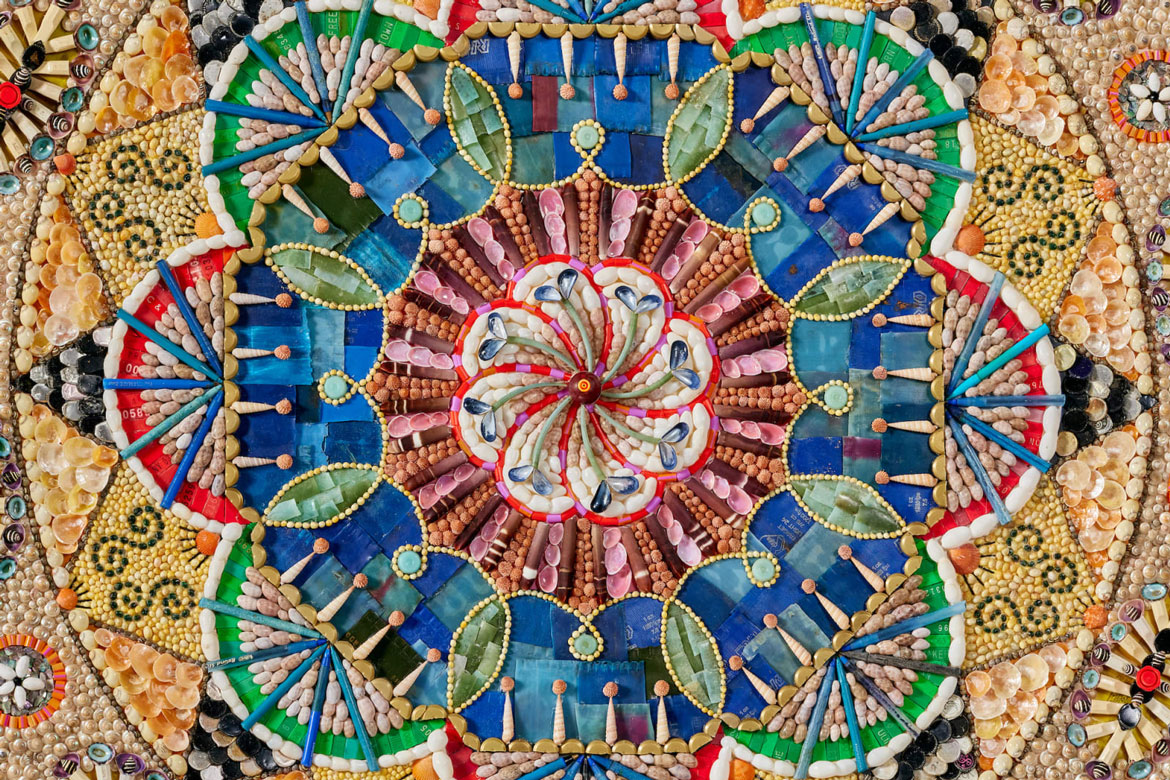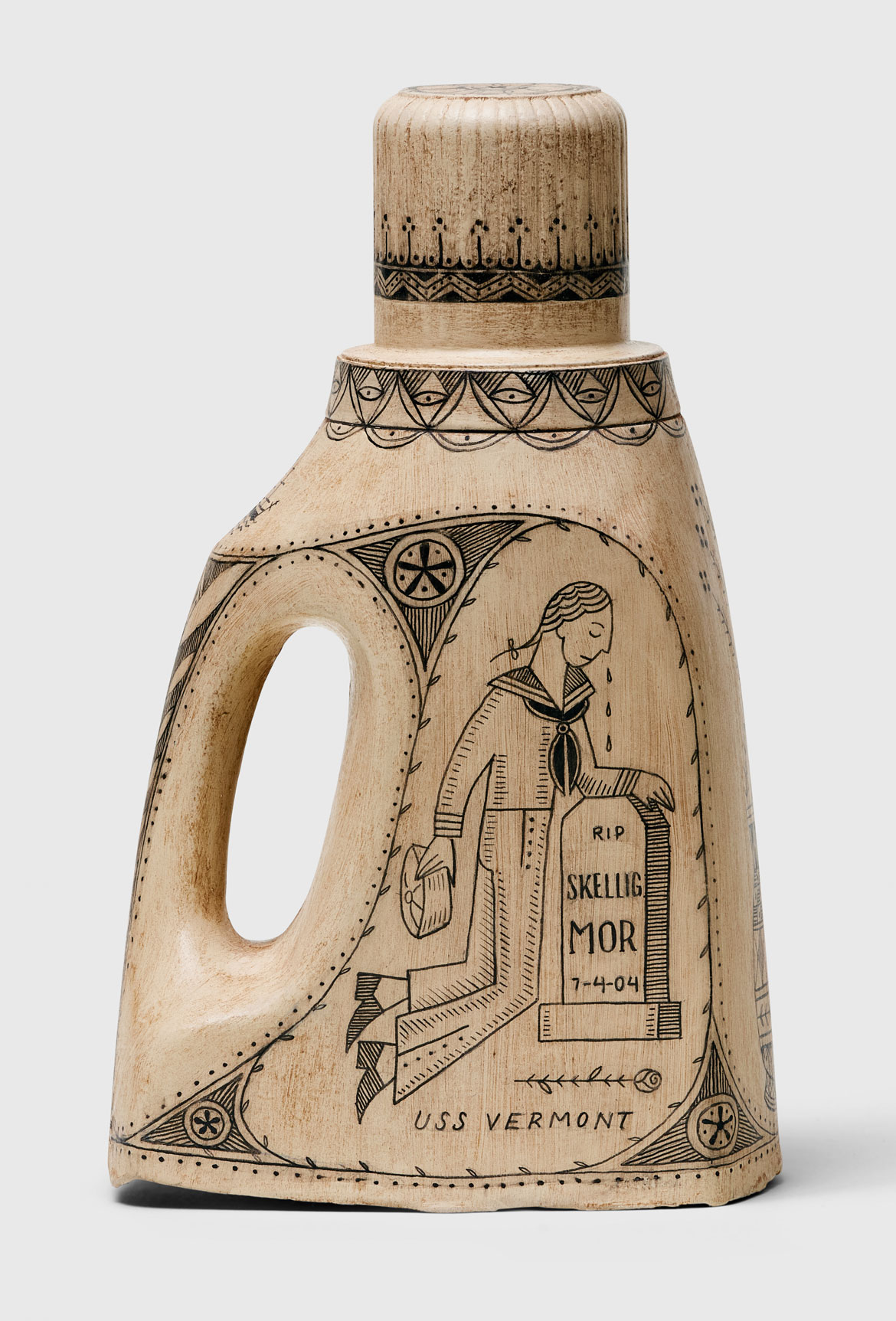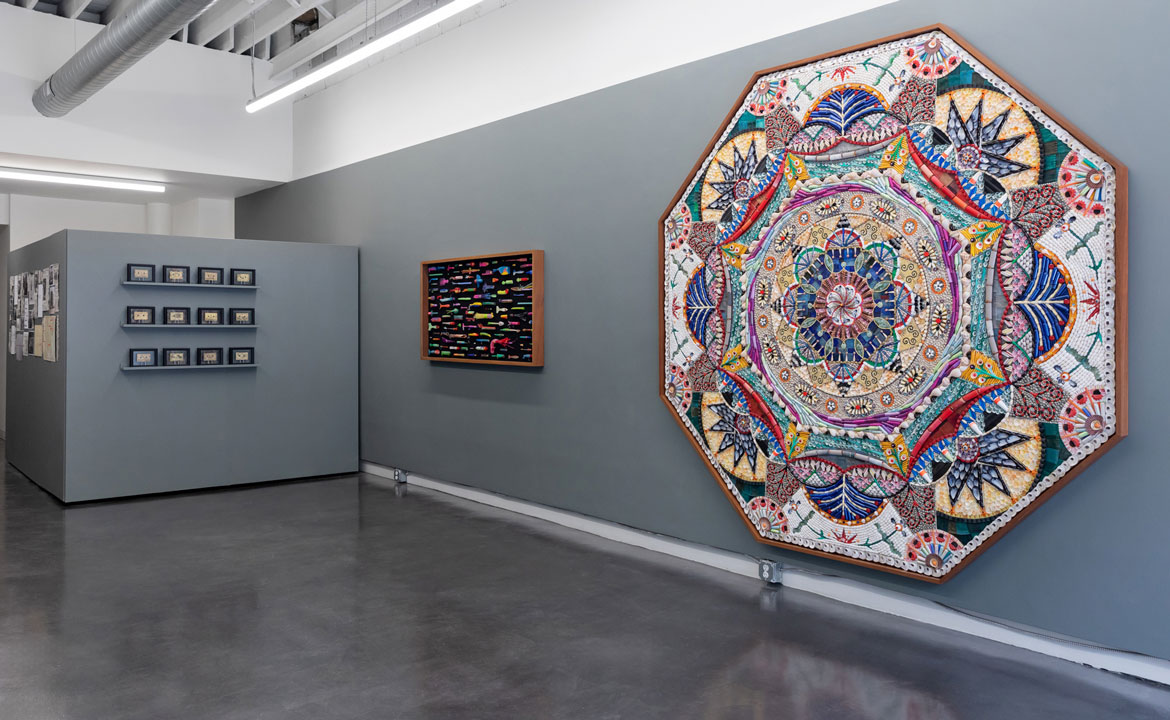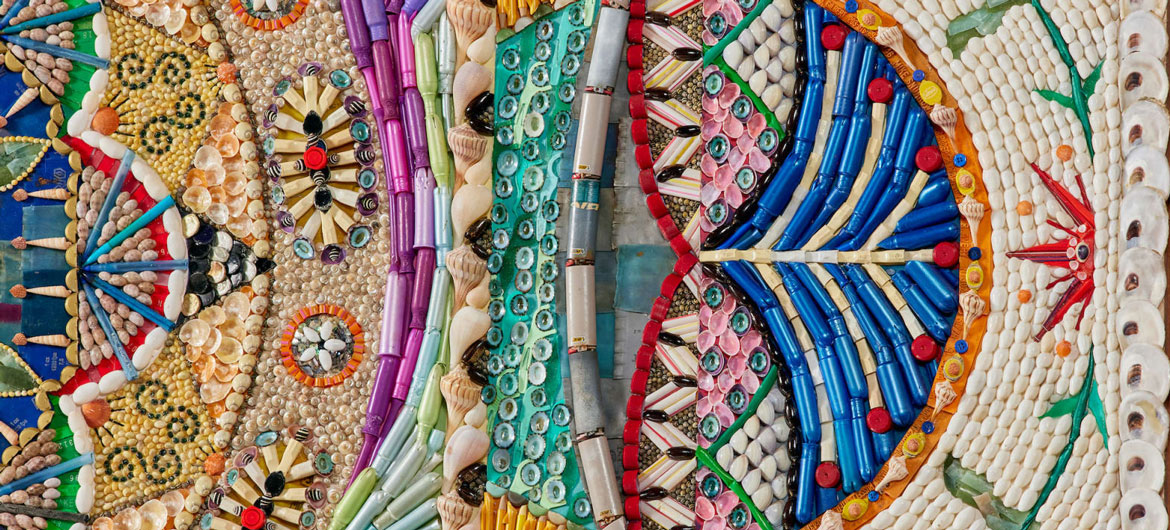“Proud Winner of the Guinness Book of World Records Largest Sailors Valentine in the World,” an 8-foot-tall pattern of radiating flower designs, is the showstopper at New York artist Duke Riley’s exhibition “The Repatriation of King Skellig Mör” at Praise Shadows Art Gallery in Brookline from May 24 to June 30, 2024.
In the 19th century, sailor valentines were dazzling patterns of shells glued into wooden boxes, roughly the size of chocolate boxes or game boards, that sailors made on long voyages or bought to give to loved ones when they returned home. Riley assembled his giant octagon from shells, tampon applicators, disposable lighters, plastic syringes, buoy parts and other plastic junk he found washed up at sea. So in Riley’s hands, the sailor valentine becomes about love of the sea and earth and a warning, a dazzlingly beautiful warning, about the plastics that our polluting our waters and lands and, in the form of microplastics, our bodies. All these plastics are, of course, another deadly product of the fossil fuel industry—like global warming.

Riley, who grew up in Boston and studied at Rhode Island School of Design in Providence, has fashioned a catchy oeuvre out of history and traditional craft and environmental concern and outdoor adventuring and alluring daredevil wit. He first gained wide notice in 2007, when he constructed a rough wooden replica of a Revolutionary War era submarine and got arrested for driving the thing rather near the ocean liner Queen Mary 2 in New York harbor.
Besides what Riley calls “the largest sailors valentine in the world,” the Brookline exhibition includes faux “ruby glass” and “scrimshaw” scratched onto “single-use plastic fished out of the waterways of the eastern seaboard,” the gallery says.
The American version of the ancient art of scrimshaw was mainly a tradition of whalers who engraved sperm whale teeth, walrus tusks, walrus ivory and bone with pictures of patriotic figures, ships, whales, and women. It is believed to have begun in the colonial era and persisted through the 20th century.
Whales were hunted for oil used for candles and to fuel lamps; baleen used to stiffen corsets, collars and support hooped skirts; and ambergris used in perfumes and sometimes as an aphrodisiac in wines. One of the ingenious ideas floating around in Riley’s work is the way whaling was part of the quest for fuel that continues with today’s devastating fossil fuel industry.

This haunting idea runs through “Monument to Five Thousand Years of Temptation and Deception V, VI, VII,” 2022, two cases of handsomely displayed fishing lures crafted from repurposed plastic junk, and the old timey-style “scrimshaw” that Riley etches onto found plastic bottles and old cassette tapes of music from the 1980s and ‘90s Boston rock scene. Onto the bottles, Riley sketches a sailor weeping at a grave, a couple running to embrace on a dock, lighthouses, mermaids, sperm whales dashing boats. There are also portraits of J. Peter Grace and an Aerovox Co. factory spilling “polychlorinated biphenyls” (aka toxic PCBs) into the sea.
“Aerovox Co and W.R. Grace & Co are two of the culprits responsible for the ongoing pollution and superfund sites at New Bedford Harbor and Woburn, MA,” Riley writes on Instagram. “…Nearly 30 years after that landmark court case ruling that W.R. Grace & Company, Beatrice Foods, and New England Plastics (N.E.P.) in Woburn, MA, were found responsible for the wells that supplied both toxic drinking water and a legacy of cancer to the local community. The sites remain contaminated despite a $21 million cleanup effort. And no one, not even the U.S. Environmental Protection Agency which monitors the site as part of the federal Superfund program, knows whether humans are still being exposed to its witch’s brew of chemicals, federal records show.”
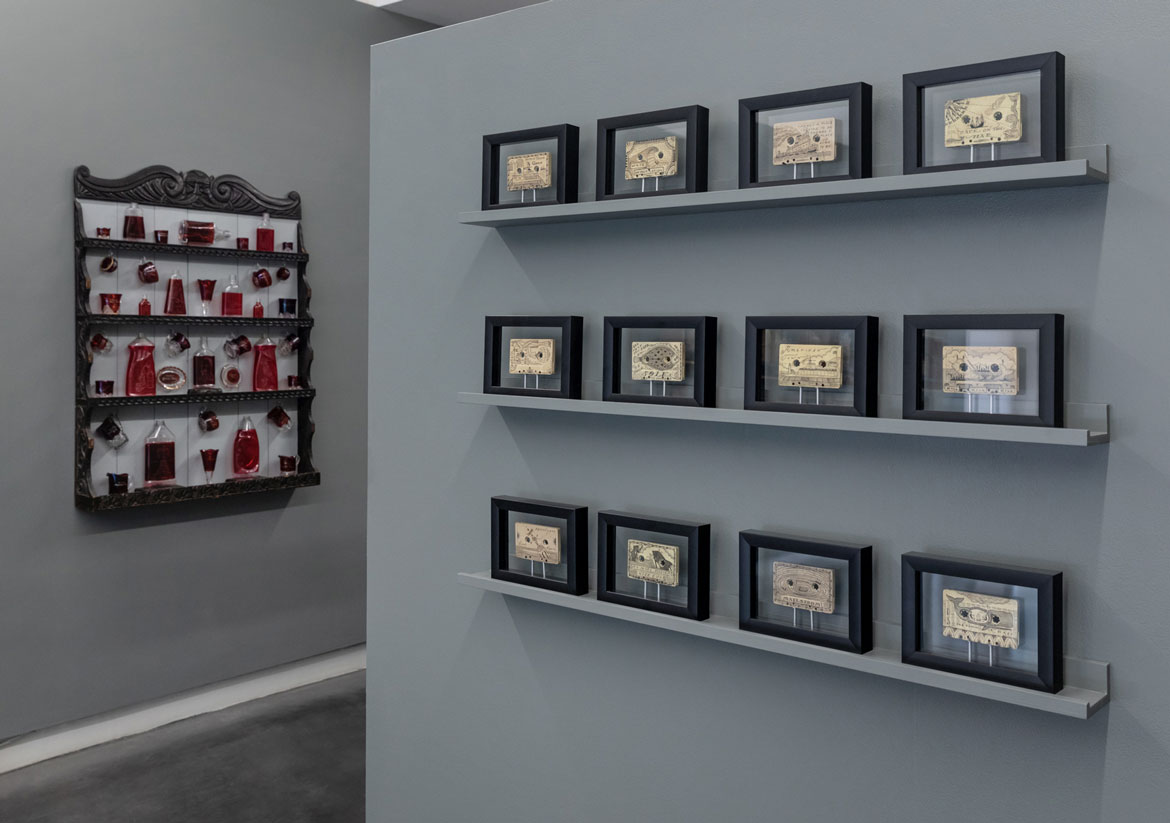
“Five Boston Battleships and Their Accompanying Mascots,” 2024, was inspired by a piece of ruby glass in his grandmother’s Cape Cod home, according to the gallery. Vintage souvenir red “ruby glass” cups, bottles, saucers, and creamers are displayed on wooden shelves with Riley’s mock-ruby glass made from empty dishwashing soap containers and other discarded plastic bottles that he’s painted red and scratched decorations onto. Including images of Quincy-built destroyers that symbolize the “United States’ strident flexing of its Imperialist muscle on nations following the Spanish-American War” (according to the gallery), a sailor at a gravestone, military men, the goat King Mör, Flaco the owl, parrots, an anchor.
“Ruby glass was one of the first mass produced souvenirs in America,” Riley writes on Instagram. “They began to flourish at the turn of the last century at a time when working people in the USA first had leisure time and could afford to take vacations and the tourist industry began. It coincided with the expansion of the US Navy and the United States military dominance over the rest of the world.”

The title piece of the exhibition is a display of old news clippings and new letters from Riley to Boston-area museums seeking the whereabouts of Skellig Mör, a prize-winning goat at the 1905 Puck Fair in Ireland. After the contest, Boston’s Knights of St. Brendan bought the goat, but when that organization splintered, the goat ended up as a mascot on the USS Vermont, built in Quincy. When the goat died in 1909, The Boston Globe headline read: “Skelling Mör Today Is No More / Death Gets the Vermont’s Goat, the Pride of the Navy. / Change in Diet From Tin Cans to Steel Hatch Combing Fatal.” The goat was taxidermied and put on display at a Boston museum. Riley wants to know where the dead goat is now. The piece feels like a comical sidetrack into old, weird maritime lore.
If this is the kind of coverage of arts, cultures and activisms you appreciate, please support Wonderland by contributing to Wonderland on Patreon. And sign up for our free, occasional newsletter so that you don’t miss any of our reporting. (All content ©Greg Cook 2024 or the respective creators.)
